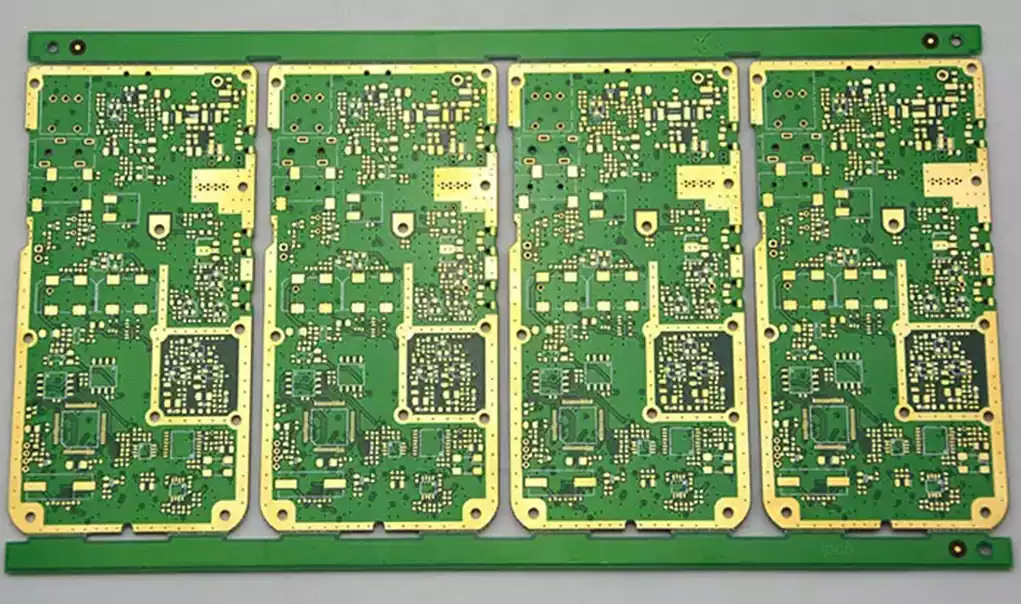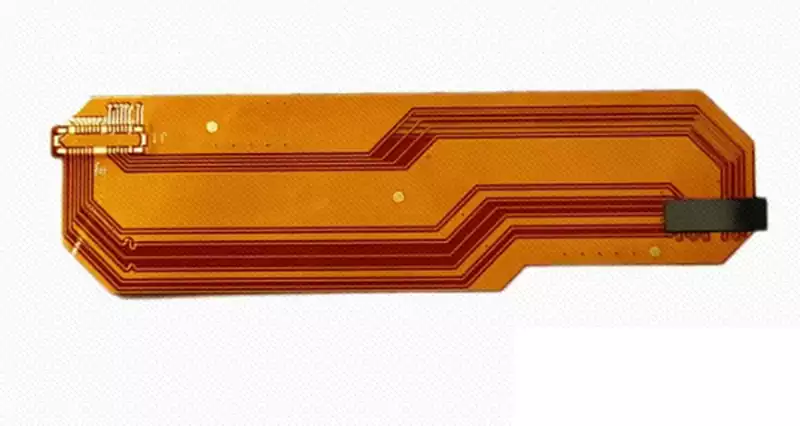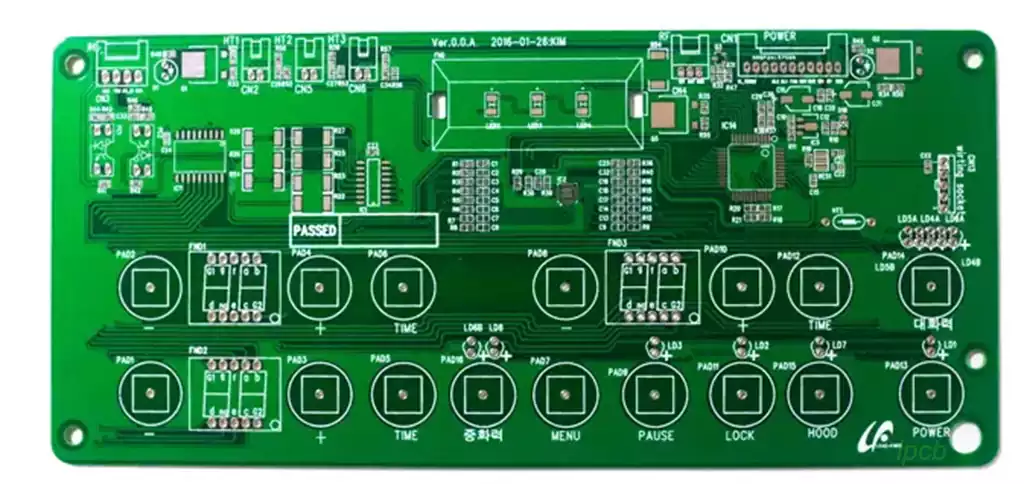The use of teflon pcb laminate has increased dramatically recently. There are many reasons for this change. One of the reasons is the rapid development of the electronics industry and the increasing demand for high-frequency boards.
What is teflon pcb laminate
Teflon is a chemical substance that can be simply called polytetrafluoroethylene or PTFE. It is widely used in electrical applications due to its electrical insulation properties. It has a small dielectric constant and a small loss tangent, which makes it suitable for high-frequency and microwave applications. Teflon is also chemically inert and does not react chemically. It has a low coefficient of friction, so it can be used in some tough working conditions.
Teflon pcb laminate is a “printed circuit board” made of PTFE-based laminate, which is different from other recognized materials such as FR4. These circuit boards are designed for specific applications that need to transmit signals at high frequencies. We need to minimize signal loss and the electrical characteristics of the circuit board should be top-notch. The special properties of Teflon make it very suitable for PCBs used in communication equipment, radar materials, satellite equipment, and other radio frequency and microwave machinery.
Teflon pcb laminate is a circuit board made of Teflon as the base material. Teflon is a brand name created by DuPont. It refers to the company’s line of PTFE materials, but has since been adopted around the world.
Types of teflon pcb laminate materials
Commercial Teflon used in PCB production is a composite material that contains fillers and additives. Additives improve its structure but also enhance electrical and thermal properties. In this regard, we have these PTFE material types.
Reinforced Teflon
Reinforcements make the circuit board more rigid and include ceramic or glass fibers. Glass reinforcements use either woven or non-woven fibers. Most substrates use woven glass fibers. They have better rigidity than non-woven reinforcements.
Filled PTFE
Non-reinforced PTFE uses fillers. Fillers mainly change thermal and electrical properties. For example, it can increase thermal conductivity, reduce CTE mismatch or increase Dk values. Fillers are mainly ceramic particles.
teflon pcb laminate material properties
PTFE has various unique properties that make it an excellent material for circuit boards, but also some that are not so favorable. These properties include those mentioned below.
- Low Dielectric Constant (Dk)
The dielectric constant in integrated circuits is denoted by Dk, which quantifies the material’s ability to store electrical energy in an electric field. Teflon has a low and flexible dielectric constant between 2 and 1.
This value is much lower than the 4 value of FR4. The above results determine that the lower the Dk value, the higher the propagation speed. Teflon PCB board is therefore more suitable for high-frequency applications where signal integrity is important.
- Low Loss Tangent (DF)
The dissipation factor or loss tangent (Df) represents the ratio of a particular material’s dielectric loss to its energy throughput. Teflon pcb laminate is characterized by an extremely low loss tangent, usually around 0 or less, which reduces signal loss and allows high-frequency signals to propagate far with little distortion. This feature is very important, especially in RF and microwave applications. - High Thermal Stability
Teflon pcb laminate material is known for its high thermal stability. Its melting point is about 327°C. This means that Teflon circuit boards can withstand the heat of production processes such as operation and welding. It also has extraordinary high temperature stability, so the circuit board is rigid and highly conductive regardless of the operating conditions. - Chemical inertness
Teflon PCB material is chemically stable and resistant to chemical attack, and is chemically inert to almost all common acids, bases and solvents.
It is not prone to corrosion. This makes teflon pcb laminate boards ideal for use in places where ordinary PCB materials may be affected by chemicals, moisture or any other corrosive substances. This feature is very popular in aerospace military, medical and industrial products, where circuit performance is critical.
- Excellent insulation properties
Teflon has very high electrical insulation properties, so it is a suitable material when it comes to reducing interference between signals on PCBs. This is especially true in the high operating frequency range, where coupling and EMI are powerful sources of signal interference. Teflon pcb laminate boards have good insulation properties, so interference and noise can be minimized. - Thermal expansion coefficient
The thermal expansion coefficient can be expressed as the degree to which a given material changes in size due to temperature changes. Compared to most other PCB materials, teflon pcb laminate materials have a relatively low CTE. This means that PCB teflon has little or no dimensional change when subjected to temperature changes. This stability is very beneficial for maintaining the geometry of circuits, especially those in multilayer printed circuit boards used in high-frequency circuits.

How are teflon boards manufactured?
The manufacturing process is similar to other material types, but there are some differences. The key stages include material preparation (engineers prepare the substrate) and the manufacturing process (producing the circuit board).
Material Selection and Preparation
As mentioned earlier, PTFE teflon substrates are available in filled and reinforced types. The selected material is shaped and pre-treated for board manufacturing.
Preparation involves various procedures such as cleaning and etching the surface. Multilayer boards are stacked using adhesive films and high pressure.
Board Manufacturing and Testing
The process of manufacturing teflon boards requires multiple steps. It may vary from manufacturer to manufacturer, but generally includes the following.
- Drilling – Holes are drilled in the PTFE substrate. These holes include through-holes, holes for component assembly, and holes for board mounting or testing
- Plating – The substrate is coated with copper. This layer is the conductive surface where the traces are formed
- Etching – Etching the copper layer using chemicals or other methods to reveal the trace pattern
- Baking – The board is heated to remove excess moisture before applying the solder mask
- Solder mask – Solder is applied to the etched surface to protect the traces
- Silk screen – Silk screen printed layer containing components, board and manufacturer information
- Inspection and testing – Finished boards are inspected for defects and tested for quality
Key considerations for teflon pcb laminate development and production
- Material handling and processing
PCB manufacturing involves several stages where handling Teflon becomes quite difficult mainly because the material is soft and elastic and sensitive to pressure and heat. The material used must be cut, drilled and laminated and specific types of equipment and methods must be used to avoid any type of mechanical damage or alteration to the material. - Controlled impedance design
Therefore, high frequency signals require controlled impedance at work due to the reduction in signal smoothness. Since Teflon is used in PCB manufacturing, close attention needs to be paid to trace width, spacing, and thickness to obtain the correct impedance value. Other techniques involved in the planning of teflon pcb laminate boards include the use of sophisticated design tools and simulation software to design and simulate the impedance of the PCB. - Surface treatment
The surface treatment of teflon pcb laminate is crucial as it affects the performance, maintainability and solderability of the components. Typical surface treatments suitable for teflon circuit boards include electroless nickel immersion gold (ENIG), immersion silver and immersion tin. Such surface treatments produce a smooth, very flat surface that guarantees good conductivity and oxidation resistance. - Manufacturing tolerances
Another point to keep in mind when using teflon pcb laminate materials is that it is often difficult to get close to manufacturing specifications due to the fact that it is virtually non-sticky and very slippery. This is due to the differences in the thickness, dielectric constant and other related factors of the materials used that affect the functionality of the PCB. Teflon pcb laminate manufacturers play many roles in these variables to ensure that the final product has the right characteristics.
Teflon pcb laminate boards are generally more expensive than ordinary FR4 PCBs. The reason behind this is the cost of Teflon and the special process in the manufacturing process of Teflon circuit boards. But when it comes to cost, its claimed performance, reliability, and durability overshadow it, especially in common devices where signal integrity is important.
Challenges in Manufacturing Teflon PCB Laminate
PCB manufacturers face several challenges when using PTFE to manufacture printed circuit boards. For example, the material’s non-stick and lubricious properties complicate the metallization process. Various techniques address these challenges.
- The substrate surface can first be micro-etched with chemicals, or manufacturers can use plasma arc technology to increase roughness and improve adhesion. Another method is to coat the surface with an adhesive film. Additives and fillers also help increase adhesion.
- The flexibility and softness of PTFE make drilling difficult. The drill bit may deviate from the surface and break, increasing the manufacturing cost of the board.
As a solution, Teflon PCB laminate manufacturers use fiberglass or ceramic materials to reinforce the substrate. Doing so can increase rigidity, making drilling easier and less expensive. - Another significant challenge is the brittleness of ceramic-filled boards. The fillers make them brittle. This characteristic makes the circuit board require extra care throughout the PCB manufacturing process.
- PTFE PCBs need to be properly handled and stored to avoid scratches and other damage after manufacturing and testing. Storage conditions require room temperature and away from sunlight.
Advantages and Disadvantages of Teflon PCB Boards
PTFE has many advantages as a circuit board material and is mainly used in RF electronics. It also has some disadvantages in certain applications, including RF and non-RF circuits. We outline its advantages and disadvantages.
Why Choose
- They have lower dielectric loss and dissipation factor. This property makes them suitable for high RF or microwave frequency electronic devices due to reduced signal loss
- Low dielectric constant improves and increases signal propagation and speed, making them suitable for high-speed circuits in computers and communication systems
- They can withstand high temperatures, suitable for applications where the circuit is overheated
- Low water absorption allows safe operation in high humidity environments
- You can use them in corrosive environments due to the material’s excellent resistance to a wide range of chemicals
Disadvantages - The high cost of Teflon can increase the price of the product, making the material less suitable for projects with limited budgets
- The lack of mechanical robustness of the material compared to other substrates such as metal or ceramics may not be suitable for certain uses
- They may be difficult to manufacture due to their specific characteristics, such as low adhesion, which increases the cost of product manufacturing
Teflon pcb laminate has excellent characteristics that are different from other circuit board materials. Despite its higher cost, it can withstand a variety of conditions, making it a popular choice for circuit boards that can be used in harsh conditions or high-speed high-frequency applications. If you need it, please contact us.



